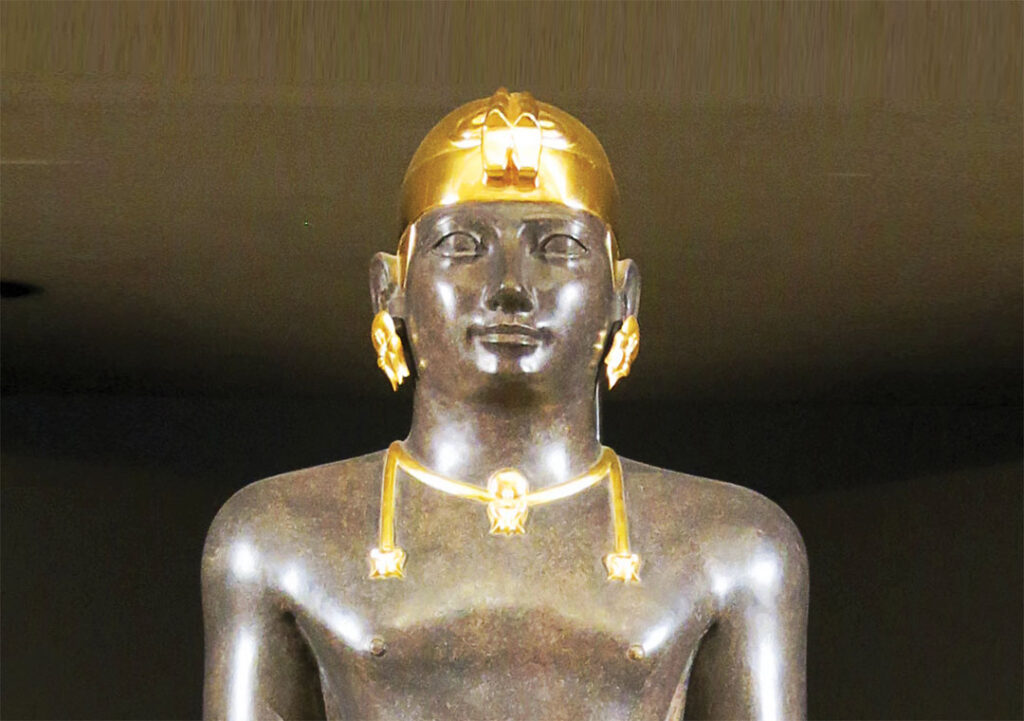ADF STAFF
Pharaoh Taharqa was devoted to tradition. He built pyramids. He embraced titles, spoke the Egyptian language and used its writing system as his medium of record. He took on ambitious construction projects and was committed to the revitalization of Egyptian religious sites.
But Taharqa, who ruled from 690 B.C. to 664 B.C., was not Egyptian. He was a Nubian from the Kingdom of Kush in what is now Sudan. He was one of the Nubian pharaohs of the 25th Dynasty. They ruled Egypt for almost 100 years.
The dynasty’s rise to power in Egypt began with King Piye of the Kush empire, who invaded Egypt and captured Memphis, the capital, in 727 B.C. He declared himself pharaoh, but the conquest was not complete until his successor, Shebitku, fully established Kushite control over Egypt.
Egypt was losing power and prestige when the Nubians arrived. They sought to restore the kingdom to its former glory, and reunified Lower Egypt, Upper Egypt and, along with Kush, created the largest Egyptian empire since the New Kingdom era ended about 1070 B.C.
Taharqa succeeded Shebitku, but his kingdom was forever in the shadow of the Assyrian Empire, in what is now Iraq and other parts of the Middle East. Assyrian King Esarhaddon led several campaigns against Taharqa and attempted to conquer Egypt in 673 B.C. Hoping for a surprise attack, Esarhaddon marched his Soldiers at great speed, and they were exhausted by the time they reached the city of Ashkelon. In the ensuing battle, the Assyrians were slaughtered.
The defeat was so complete that Esarhaddon abandoned his plans to conquer Egypt for two years. When at last he returned, his army was much larger and was marched at a slower pace to conserve its energy. He took Memphis, confiscated Egypt’s crown jewels and concubines, and captured members of the royal family, including Taharqa’s son and wife. During the time that Esarhaddon controlled Egypt, his empire was the largest in the world.
When Esarhaddon returned to Assyria, Taharqa began plotting revolts against him throughout Lower Egypt and beyond. Within two years he reoccupied Memphis as well as the Nile Delta, and began working with the king of Tyre in what is now southern Lebanon. Together with the Kingdom of Tyre, Taharqa routed the local puppet rulers Esarhaddon had appointed.
Despite the incessant threat of Assyria, Taharqa’s reign is considered a great success. He was the recipient of some good luck in the form of abundant rain that flooded the Nile and produced ample crops for years. But historians say he also was a smart, efficient ruler and continued the Nubian Pharaohs’ tradition of constructing and restoring temples and other buildings. Historian Caroline Armstrong described him as “the greatest builder among the Kushite rulers.” His new temples spurred the growth of “temple towns,” which served as local centers of government and hubs for commerce.
Taharqa’s love of Egyptian culture was such that he commissioned the first pyramid in Kush, in Nuri on the west side of the Nile, in what is now the Northern state of Sudan. He was responsible for an unprecedented level of integration of the Egyptian and Kush cultures as evidenced by the revival of architecture, arts and religion to older, higher standards. He rebuilt and expanded temples and monuments at Karnak, Kawa and Jebel Barkal — monuments that survive to this day.
Despite his cultural achievements, Taharqa could not stop the Assyrian Empire. After Esarhaddon died, his successor drove Taharqa out, forcing him to retreat to Upper Egypt and finally to Kush. When he died in 664, he was buried in his pyramid in Nuri.

